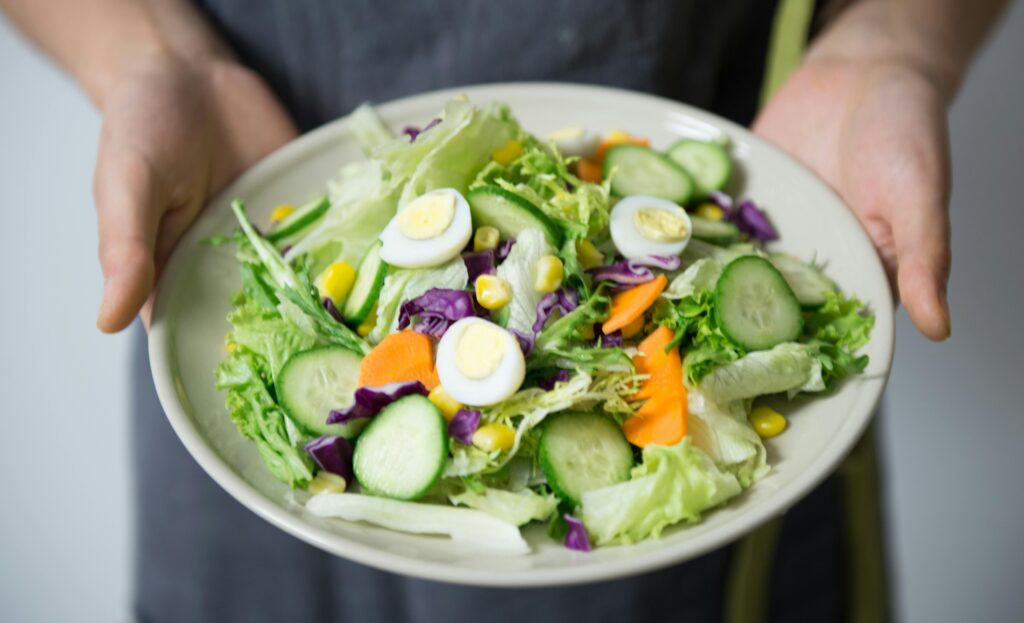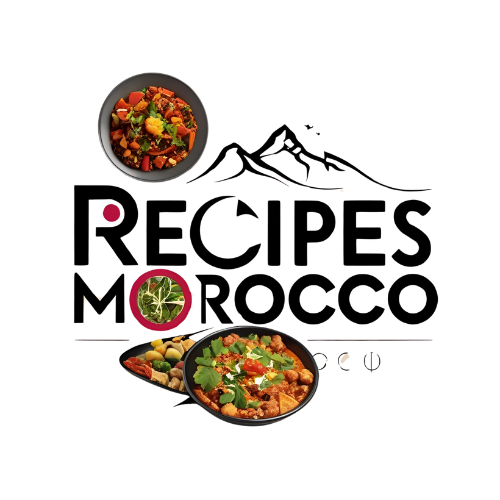Vegetarian Treats: Moroccan Recipes for All Tastes

A rich cultural legacy spanning millennia is reflected in the complex tapestry of flavors, colors, and smells that characterizes Moroccan food. Moroccan cuisine offers a remarkable diversity of vegetarian delicacies that appeal to a wide range of palates, even if meat dishes like tagines and kebabs sometimes take center stage. Fresh veggies, flavorful spices, and healthy grains are used to create vegetarian meals that are not only nourishing but also very filling. Moroccan vegetarian cuisine highlights the nation’s agricultural abundance and the skill of combining basic ingredients with strong flavors, whether in the busy souks of Marrakech or the tranquil surroundings of the Atlas Mountains. Ten delicious vegetarian Moroccan meals will be covered in this article, each showcasing distinctive ingredients and cooking methods to encourage you to enjoy the benefits of plant-based eating in a Moroccan way.
Seven Vegetable Couscous
A classic Moroccan dish that epitomizes vegetarian cooking is couscous with seven vegetables. A vibrant medley of seasonal vegetables, such as turnips, carrots, zucchini, and chickpeas, are cooked in a fragrant broth flavored with a blend of spices like cumin and coriander, and served atop fluffy couscous. To obtain the couscous’s light, airy texture, it is first steamed. Meanwhile, the veggies are cooked until they are soft, bringing forth their inherent sweetness. This dish, which is typically served on Fridays, represents community and plenty since family get together to share it. Couscous with Seven Vegetables is a mainstay in Moroccan homes and a celebration of the nation’s agricultural richness because of its colorful presentation and well-balanced flavors.
Tagine of Vegetables
Moroccan cuisine’s skill of slow cooking is showcased by the tasty and adaptable vegetable tagine. This dish usually consists of a rich blend of spices, such as paprika, saffron, and cinnamon, cooked in a tagine pot with a variety of seasonal vegetables, including bell peppers, eggplant, and potatoes. Steam may travel through the tagine pot’s distinctive conical form, producing soft vegetables that are loaded with flavorful aromas. Cooks can experiment with different vegetable combinations and spice ratios to suit their tastes, which is what makes Vegetable Tagine unique. This dish, which is frequently paired with fluffy couscous or crusty bread, perfectly captures the spirit of Moroccan hospitality and the delight of dining with loved ones.
Zaalouk: Salad with Smoked Eggplant
A well-known Moroccan salad that highlights the smokey taste of roasted eggplant is called zaalouk. To make this dish, eggplants are roasted or grilled until they are tender and caramelized. They are then combined with olive oil, tomatoes, garlic, and a mixture of spices, including paprika and cumin. A thick, savory paste is then produced by cooking down the ingredients; this can be served warm or at room temperature. As a mezze meal, zaalouk is frequently consumed with crusty bread for dipping. A wonderful appetizer or side dish, whose smokey flavor is enhanced by the earthiness of the spices and the freshness of the tomatoes. The essence of Moroccan food is embodied in zaalouk, where basic components are converted into amazing dishes.
Moroccan Lentil Soup, or Harira
Although it can be enjoyed all year round, harira is a classic Moroccan soup that is frequently consumed to break the fast during Ramadan. Lentils, chickpeas, and a range of fresh herbs and spices, such as ginger, parsley, and cilantro, are used to make this filling soup. Usually enhanced with tomatoes, the soup’s base occasionally contains grains or little noodles for texture. Known for its warming properties, harira is a complete meal that is frequently served with bread and dates. In addition to being tasty, Harira’s blend of legumes and spices offers a good amount of fiber and protein. The fact that this filling soup is frequently made in big quantities to feed family and friends is evidence of how important community and sharing are in Moroccan society.
Stuffed Peppers from Morocco
Moroccan Stuffed Peppers are a vibrant and tasty recipe that emphasizes the use of fragrant spices and fresh veggies. Usually, cooked rice, herbs, and spices like cumin and cinnamon are stuffed inside hollowed-out bell peppers. Adding almonds or raisins for a little sweetness and texture is one option. After being filled, the peppers are cooked until they are soft in a tasty tomato sauce. This dish is a great choice for a filling dinner or a festive get-together because it not only looks good but also has a delicious blend of flavors and textures. Moroccan Stuffed Peppers are a wonderful way to celebrate the rich culinary traditions of North Africa while indulging in seasonal food.
B’stilla: A Delectable Dessert
Often stuffed with chicken or pigeon, but vegetarian variations are just as delicious, b’stilla, often called pastilla, is a typical Moroccan pastry. A vegetarian B’stilla usually has layers of flaky pastry encasing a delicious filling composed of spiced vegetables, almonds, and a hint of cinnamon. The meal is frequently topped with cinnamon and powdered sugar, which produces a lovely flavor contrast. B’stilla preparation calls for time and skill because the fragile pastry needs to be handled with care to get the ideal texture. Vegetarian B’stilla, which is frequently served at festivities and special events, is a prime example of Moroccan cuisine’s refinement and the inventiveness that can be incorporated into classic recipes.
Salad of Moroccan Carrots
A light and tangy recipe that highlights the inherent sweetness of carrots is Moroccan Carrot Salad. Typically, this salad consists of grated or shredded carrots mixed with a blend of lemon juice, olive oil, and cumin for taste. Fresh herbs like cilantro or parsley are occasionally added to it, and for extra sweetness and texture, almonds or raisins may be added. This salad’s simplicity lets the vibrant flavors take center stage, making it the ideal side dish for heartier meals or a light dinner on its own. Moroccan Carrot Salad is a mainstay in Moroccan homes because it reflects the value of balancing flavors and using fresh ingredients.
Fattoush: A Bread Salad from Morocco
Fattoush is a colorful Moroccan dish that combines leftover bread—usually flatbread or khobz—with fresh herbs and vegetables. While the salad consists of bell peppers, tomatoes, cucumbers, and radishes, all of which are combined with a tangy dressing prepared from olive oil, lemon juice, and sumac, the bread is toasted or fried to provide crunch. A delicious and vibrant dish that honors the abundance of fresh food, fattoush is a great way to use up stale bread. This salad, which highlights the Moroccan method of using each item carefully and imaginatively, is frequently eaten as a cool side dish or appetizer.
Chickpeas with Moroccan Spice
A simple but tasty dish that can be served as a side dish or as a main course is Moroccan Spiced Chickpeas. A mixture of spices, including paprika, coriander, and cumin, are used to cook chickpeas, bringing out their earthy flavor. There are several methods to make this dish, ranging from a straightforward sauté with garlic and onions to a more complex stew with tomatoes and greens. Spiced chickpeas are a great complement to salads, grain bowls, or even eaten by itself with crusty toast because of their versatility. In addition to being healthful, this recipe, which is high in protein and fiber, epitomizes Moroccan cookery, in which spices elevate ordinary items to remarkable heights.
Moroccan Mint Tea: A Delightful Custom
Without including the traditional Moroccan mint tea, no study of Moroccan cuisine would be complete. Mint tea is a staple of Moroccan hospitality and culture, even if it isn’t a traditional cuisine. Green tea is steeped with sugar and fresh mint leaves to create this delightfully sweet and fragrant beverage. Mint tea preparation is an art form that frequently uses complex pouring techniques to improve the tea’s flavors and aerate it. Traditionally consumed throughout the day in elegant glasses, mint tea represents camaraderie and community. A beloved custom is sharing a pot of mint tea with loved ones, which makes it a necessary part of any Moroccan dinner.
In conclusion
The diversity of flavors, textures, and colors seen in Moroccan vegetarian food highlights the depth of North African culinary traditions. Every recipe showcases the use of fresh ingredients and fragrant spices that characterize Moroccan cooking, from the filling Couscous with Seven Vegetables to the colorful Moroccan Carrot Salad. These recipes are ideal for celebrations and family get-togethers since they emphasize community and sharing in both preparation and consumption. Exploring the world of Moroccan vegetarian food offers a great chance to enjoy not only delectable meals but also the cultural meaning behind them, as more individuals adopt plant-based diets. Moroccan vegetarian delicacies promise to entice your taste buds and bring the warmth of Moroccan hospitality to your table, regardless of your level of experience with plant-based diets or your desire to eat more of them.
